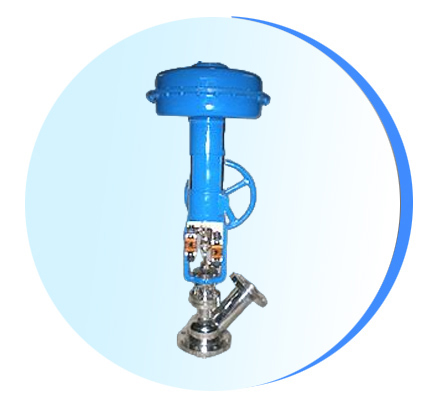
Manual Flush Bottom Valves are essential components used in industrial applications to provide efficient drainage and easy cleaning of tanks, vessels, and pipelines. These valves feature a manual operation mechanism that allows operators to control the drainage process manually. In this comprehensive guide, we will delve into the working principles, advantages, applications, and maintenance considerations of Manual Flush Bottom Valves. Whether you are an engineer, technician, or someone interested in fluid handling systems, this article will provide valuable insights into the functionality and benefits of Manual Flush Bottom Valves.
Pawar Industries is leading Manufacturers in Manual Flush Bottom Valves
Working Principles of Manual Flush Bottom Valves -
Manual Flush Bottom Valves are designed to ensure effective drainage of fluids or scurries from tanks, vessels, and pipelines. They consist of a valve body, actuator, disc, and manual operating mechanism. When the valve is in the open position, the disc moves away from the seat, allowing the fluid or slurry to flow out.
The manual operating mechanism, often a hand wheel or lever, enables operators to control the valve's position manually. By rotating the hand wheel or operating the lever, operators can open or close the valve as needed for efficient drainage or shut-off.
The design of Manual Flush Bottom Valves ensures complete emptying of the tank or vessel, minimizing residue buildup and facilitating easy cleaning and maintenance. Once the fluid is fully drained or the desired shut-off position is achieved, the valve can be manually closed to prevent any back flow or leakage.
Advantages of Manual Flush Bottom Valves -
Manual Flush Bottom Valves offer numerous advantages, making them a preferred choice in industrial applications where efficient drainage and easy maintenance are crucial. Some key advantages include:
a) Efficient drainage : Manual Flush Bottom Valves ensure complete and efficient drainage of tanks, vessels, and pipelines, preventing residual fluid or slurry from stagnating and compromising process efficiency and product quality.
b) Easy manual operation : The manual operating mechanism allows operators to have direct control over the valve's position, making it easy to open or close the valve as required. This provides flexibility and convenience in the drainage process.
c) Easy maintenance : Manual Flush Bottom Valves are designed for easy maintenance. With simple operating mechanisms and fewer components compared to automated valves, they are easier to inspect, clean, and maintain.
d) Reduced risk of contamination : By facilitating effective drainage and minimizing residue buildup, Manual Flush Bottom Valves help reduce the risk of contamination and ensure product integrity in industries where hygiene and sanitation are critical.
e) Durability and reliability : Manual Flush Bottom Valves are built with robust materials and construction, ensuring durability and reliability in various industrial environments. They can withstand demanding conditions and provide long-lasting performance.
Applications of Manual Flush Bottom Valves -
Manual Flush Bottom Valves find applications in diverse industries where efficient drainage and easy maintenance are essential. Some common applications include:
a) Food and beverage industry : Manual Flush Bottom Valves are widely used in food processing, breweries, and beverage production, where hygienic drainage and cleaning of tanks, vessels, and pipelines are crucial. They ensure effective removal of residual fluids and facilitate easy sanitation.
b) Pharmaceutical industry : Manual Flush Bottom Valves play a vital role in pharmaceutical manufacturing processes, allowing efficient drainage and easy cleaning of vessels and equipment. They are essential in maintaining cleanliness, compliance with sanitary standards, and preventing cross-contamination.
c) Chemical processing : Manual Flush Bottom Valves are utilized in chemical processing plants for effective drainage of tanks and vessels handling various chemicals. They enable easy cleaning and maintenance, reducing the risk of chemical reactions, contamination, and product quality issues.
d) Water and wastewater treatment : Manual Flush Bottom Valves are employed in water and wastewater treatment plants to facilitate the efficient drainage of tanks and basins. They play a crucial role in removing sludge, sediment, and waste materials, ensuring proper functioning of treatment processes and preventing blockages.
e) Petrochemical industry : Manual Flush Bottom Valves are used in petrochemical plants for efficient drainage and cleaning of tanks and vessels involved in the storage and processing of petroleum products. They enable safe and effective removal of residual fluids, ensuring optimal operational efficiency.
f) Process industries : Manual Flush Bottom Valves find applications in various process industries, including oil and gas, pulp and paper, and mining. They are used for drainage and maintenance purposes, allowing efficient removal of fluids, scurries, and residues from process equipment.
Maintenance Considerations for Manual Flush Bottom Valves -
Proper maintenance of Manual Flush Bottom Valves is crucial to ensure their optimal performance and longevity. Here are some important maintenance considerations:
a) Regular inspection : Conduct periodic inspections to check for signs of wear, corrosion, or damage to the valve body, disc, seals, and other components. Replace any worn or damaged parts promptly to maintain efficient operation.
b) Lubrication : Ensure proper lubrication of the valve stem and other moving parts, following the manufacturer's recommendations. This helps to maintain smooth operation and prevent excessive wear.
c) Cleaning and flushing : Regularly clean the valve internals and flush the drainage system to remove any accumulated debris or sediments. This helps to prevent blockages and maintain optimal drainage performance.
d) Actuator maintenance : If the Manual Flush Bottom Valve is equipped with an actuator, perform routine maintenance on the actuator to ensure its proper functioning. This may include checking and adjusting the actuator's position or lubricating its moving parts.
e) Training and documentation : Ensure that personnel responsible for maintaining Manual Flush Bottom Valves receive proper training on maintenance procedures. Keep detailed records of maintenance activities, including inspection dates, repairs, and replacements, to track the valve's performance history.


